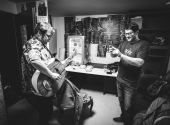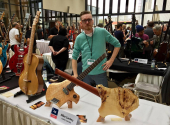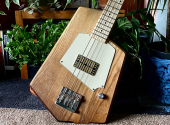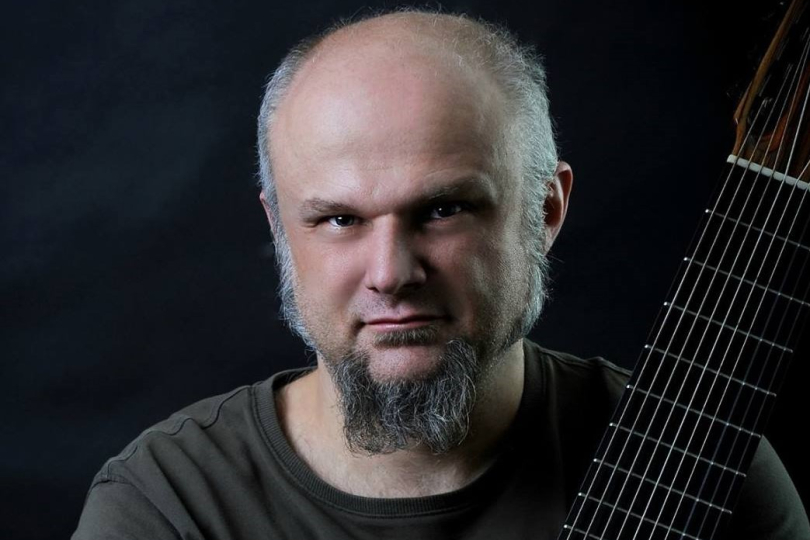
Dreamstruments #17: Jirka Mázl (Mazl Custom Guitars)
Jirka Mázl's signature guitars are a name in the Czech music community. Their typical ergonomic shape and "striped" appearance are based on the uncompromising approach of their creator – a maverick in the best sense of the word. Jirka treads his path as a guitar maker following a simple credo: "Nothing about the instrument can be bugging you". Well, simple... It takes a lot of effort for many not to give it up and overcome the temptation of making compromises. But not for Jirka, it seems.
The "Mázl" guitars have been a name in the Czech meadows and groves for three decades. Jirka Mázl came to build them in a... let's say the Czech way. His parents saw Jirka as a trained classical violinist, but he was attracted to the guitar. He was not allowed to bring six strings home because he'd lose the "fifth mind" of a violinist. And since there was no choice of new and second-hand guitars in the socialist era, Jirka had no choice but to make his instrument – both to fulfil his desire and to convince his parents that their dreams of a young violin virtuoso were over.
This would not be entirely accurate – Jirka got his first guitar in exchange for his stamp collection, but as he admits, it was a useless "piece of trash" that served only to convince his parents that he was serious about having a guitar. He then collaborated with his dad on that first guitar of his own. As he recalls, they used a saw to cut the neck from a beech doorsill and Jirka ran around the shops with a ruler, measuring the instruments in the shop windows to know the right dimensions.
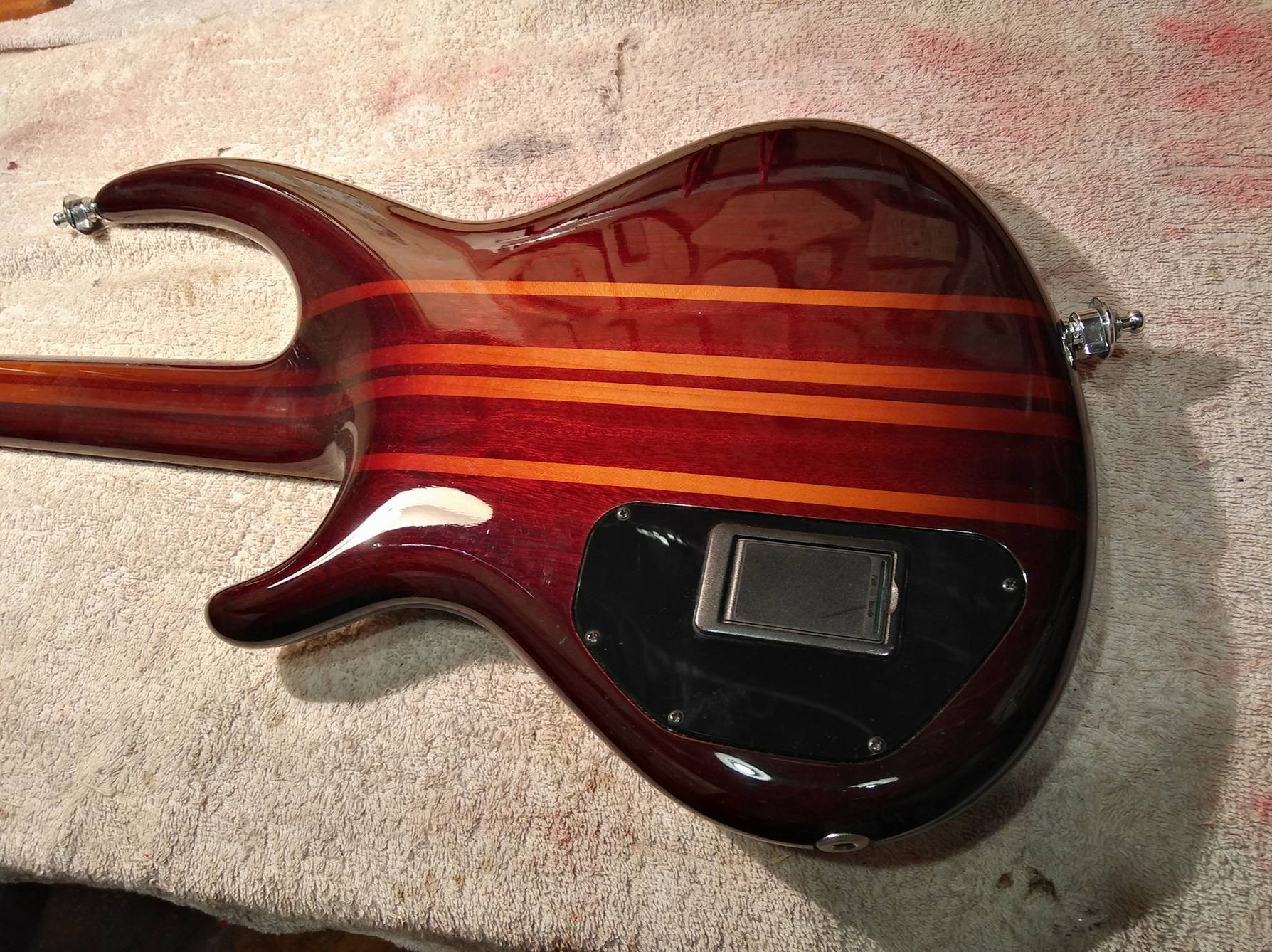
"Maybe I started at a good time..."
"Originally, I wanted to be more of a musician who builds a guitar now and then," Jirka says by way of introduction. But in the end, it turned out quite the opposite. Within a few years, the enthusiastic player became a sought-after luthier who only gets to play on rare occasions. The fact that Jirka was never afraid of a challenge certainly helped. On the contrary, as he says, his broad portfolio helps him maintain the passion he has found in his craft: "There are colleagues who focus on a certain style but I am universal. Part of the reason is that when I get tired of something, I move on to something else. When I get tired of making basses, I go to acoustics, for example."
According to Jirka, many people see the guitar-making craft idealistically as a quiet, fragrant job – and they get disappointed. The truth is that you have to adapt to the needs of your customers, and musicians are mostly nocturnal creatures, so forget about any normal working hours.
One of the most famous Czech musicians playing the Mázl guitar is definitely the bassist Jiří Veselý:
No compromises
It's a hard thing to know so much about the craft that you know how to do it and why it's pointless to try different ways. It's especially hard when you have to explain it to someone who knows exactly what they want, but maybe doesn't have such a clear idea of how to achieve it. That dialogue is also a significant part of a luthier's job. "I love that there's always a personal relationship with the customer. The initial interview can take up several hours," Jirka admits.
Mázl guitars are easily recognizable because of the vision that their creator promotes. Why put obstacles in the way of vibrations? The instrument can be made so that the entire active length of the string works with the unbroken length of the wood. The through-neck solution, combined with a sandwich structure, not only offers greater stability to the instrument but also helps eliminate the ills of other instruments – in particular, poorly accessible higher positions or an uncomfortable instrument shape. "My main focus is on ergonomics. So that the guitar or bass is not bugging you anywhere. The body is shaped in such a way that it's like a snug fit. The approach to the whole neck is the same – there's no heel in the way, nothing like that," Jirka explains.
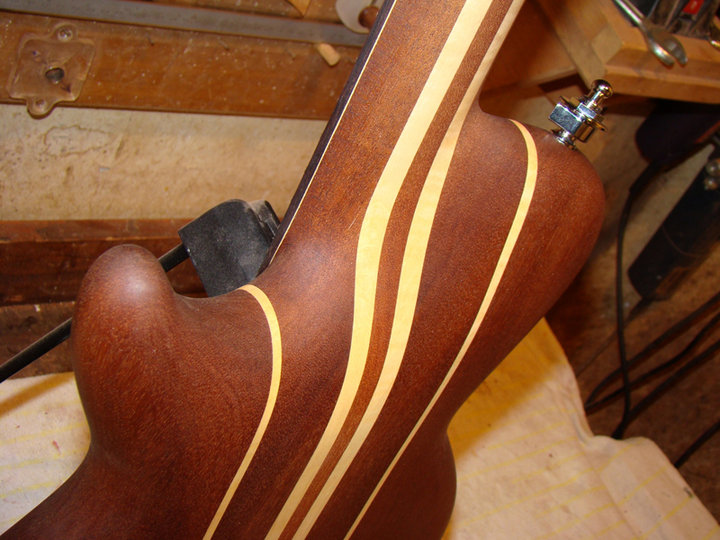
A non-transferable experience
The beautiful thing about instruments today is that everyone can have exactly what they want. Do you want the same guitar as your favourite guitarist? Usually, it's not a problem. Want a unique piece that straddles the line between musical instruments and works of art? Many specialize in that, too. But the magic of the Mázl products lies elsewhere. The foundation is, of course, in well-mastered craftsmanship. "My bet is that these things are meticulously crafted. The wood is cut correctly so that it works both mechanically and sonically, and that things work together in the way they are put together," says Jirka.
In addition to the unquestionable qualities and perfectly crafted details, Jirka brings something extra to players of his guitars. These are qualities that aren't so often articulated in instruments and are best illustrated by an anecdote about the legendary Saab drivers dedicated to this car make. When asked why this particular brand was the right one, they would have smiled as if they knew something you didn't. The main strengths of the Mázl guitars are hard to describe, but once you start relying on them, you don't want to do without them.

For example, something as trivial as quality and user-friendly hardware. No one wants to mine batteries of the active electronics out of the instrument with a screwdriver; it's much easier to pull them out of a flip-out case. Similarly, Jirka's solution for all other points that need quick access is to use caps hanging on magnets.
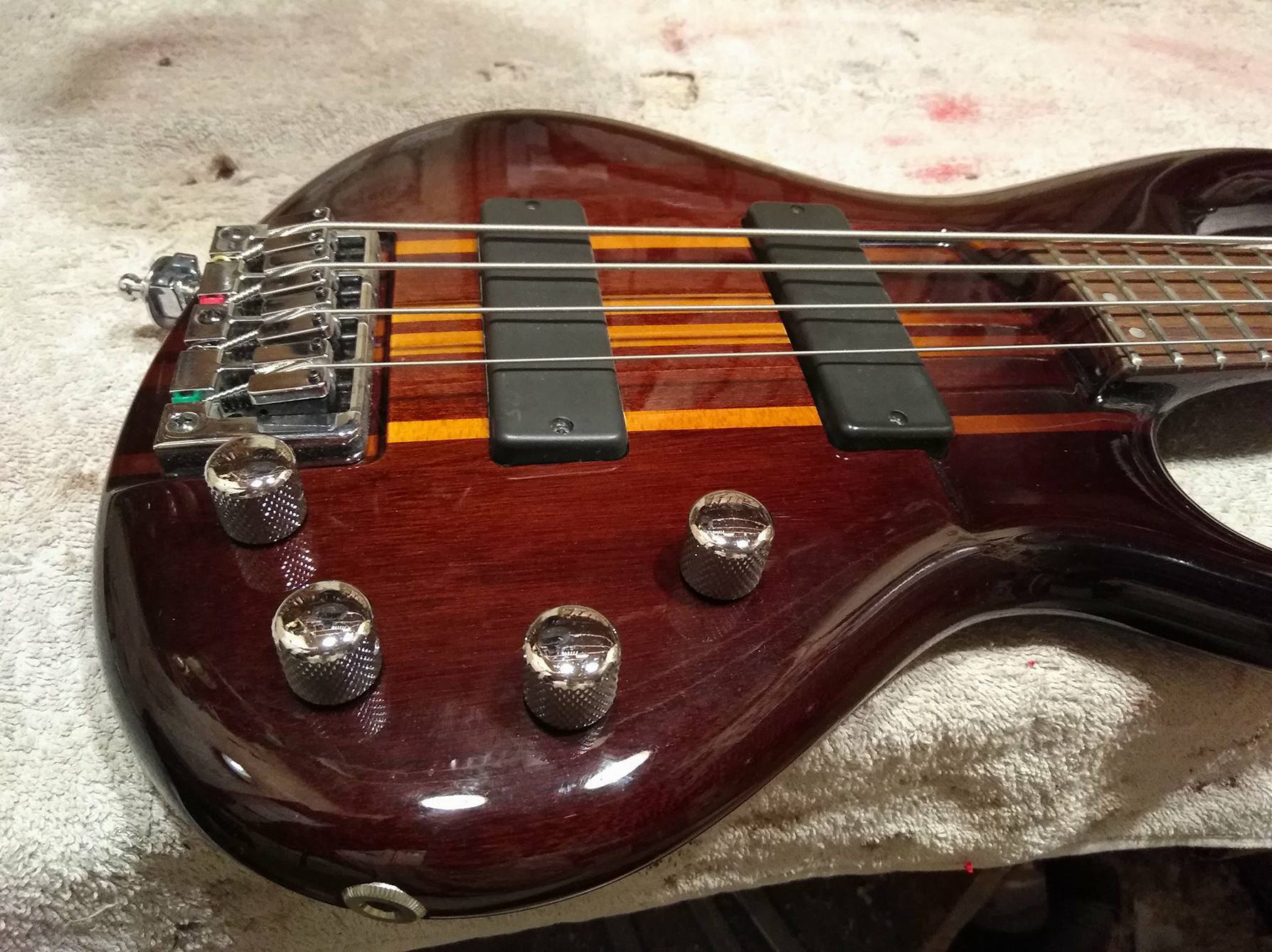
Ergonomics has already been mentioned, but it's not just about access to the top positions or balancing the instrument. Jirka's basses and guitars are usually significantly lighter than any other instruments. This quality comes hand-in-hand with the instrument's highly stable construction – no need to waste material on reinforcing the body. On bass guitars, it's worth pointing out the visible recess between the neck pickup and fretboard, which opens up space for the player to play with a slap technique.
First and foremost among these qualities, however, is absolute reliability. The bass in the video above is mine, so if I may, I'll try to share my personal experience. It has travelled across Europe, played outside at Christmas markets in ten-degree frosts and in the crazy heat of India's Sur Jahan festival, gone through the kind of temperature changes that can tear instruments apart, and let's face it, raindrops danced across its body.
The proof of Jirka's care is not only the 100% functionality and comfort even after more than fifteen years of rough handling, but also the fact that when I took the instrument for overhaul after about six years of regular playing in these rough conditions (don't take it as an example, an instrument, especially an acoustic one, needs care), Jirka took it, inspected it thoroughly, gave it back to me and said: "It doesn't seem to need anything." And that's it – to be able to play an instrument that is extremely comfortable, sonically versatile, and yet doesn't really need anything from the player, that's just the greatest joy. I guess we're lucky that Jirka Mázl didn't have such an opportunity in the 1980s.
If you have found an error or typo in the article, please let us know by e-mail info@insounder.org.


